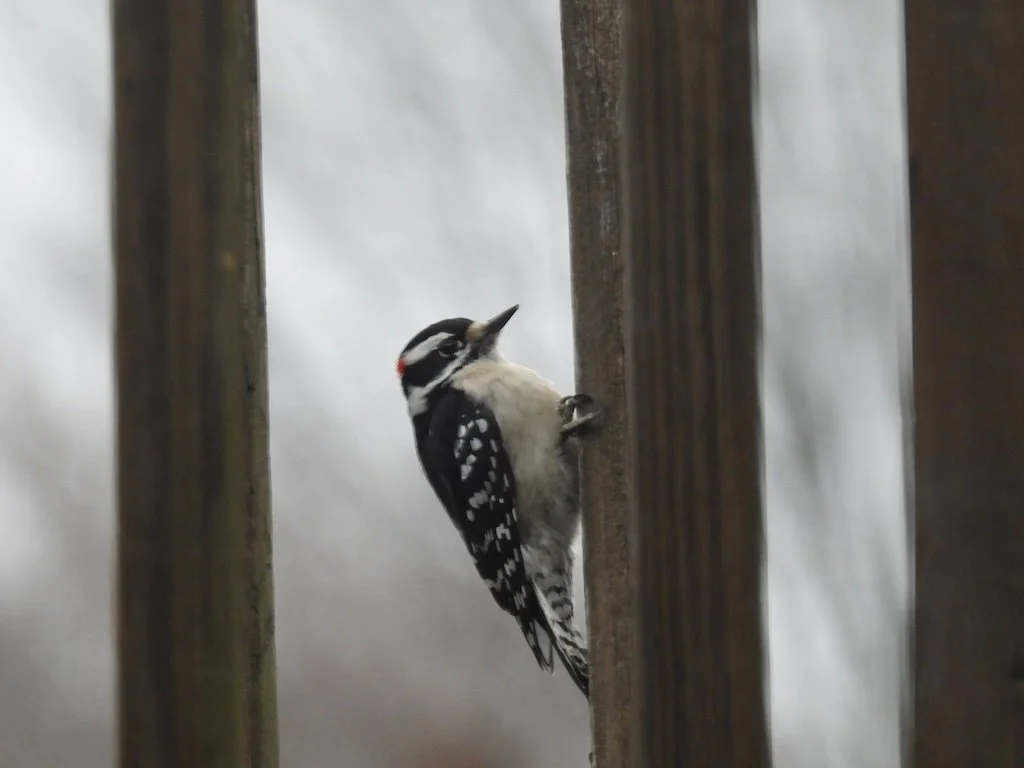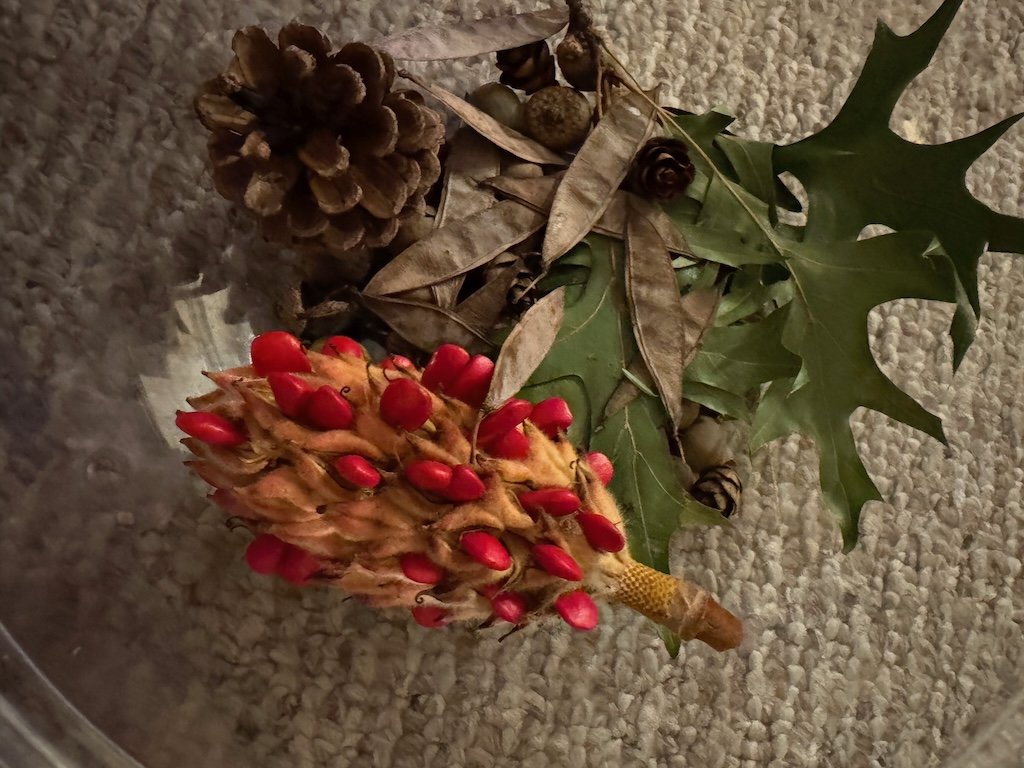Project FeederWatch – April 2025
/The juncos seemed to have left a little earlier than I expected. We didn’t see any by the beginning of April. Our bird feeder area looks almost the same as it did in the winter since the hollies and cedar are evergreen. Now we have violets coming up (the small low clumps of green in the rocked areas); they seem to thrive in the rock with landscaping cloth underneath. I’ve noticed robins and doves collecting the fine stems from last season’s violets to build nests.
We were startled during the first few minutes of one of our Feeder Watch sessions by a Cooper’s Hawk flying in and landing on the patio table! I managed to get a picture before it took off. All the other birds had vacated before the hawk came – so it didn’t get a meal from our feeder area. They didn’t return until the later part of our 30-minute observation time.
The white-throated and white-crowned sparrows are still around. I didn’t take pictures of them. There are house finches and goldfinches. The goldfinches are sporadic visitors and the one we saw stayed at the feeder longer.
The light blue color when a dove blinks always surprises me. This one seemed to snoozing….making it easier to photograph. It was cold morning, so the feathers were fluffed.
The Carolina Wren is not a bird we see every single observation time…but we usually see it at least once during our 2-day Feeder Watch count. It likes the suet…and whatever is scatter on the ground….best.
There is a pair of downy woodpeckers. They like the suet and the seed….and our trees. I am hoping they nest nearby and produce young this year.
I saw a red-bellied woodpecker briefly, but the grackles came and it left quickly. On the plus side – the grackles are acting as a deterrent to the starlings.
This is the last month of the Project Feeder Watch season. I’ll do one last post in early May to close out what happens at our feeders (maybe we’ll see some migrants). We’ll start up again in the fall.


















































































